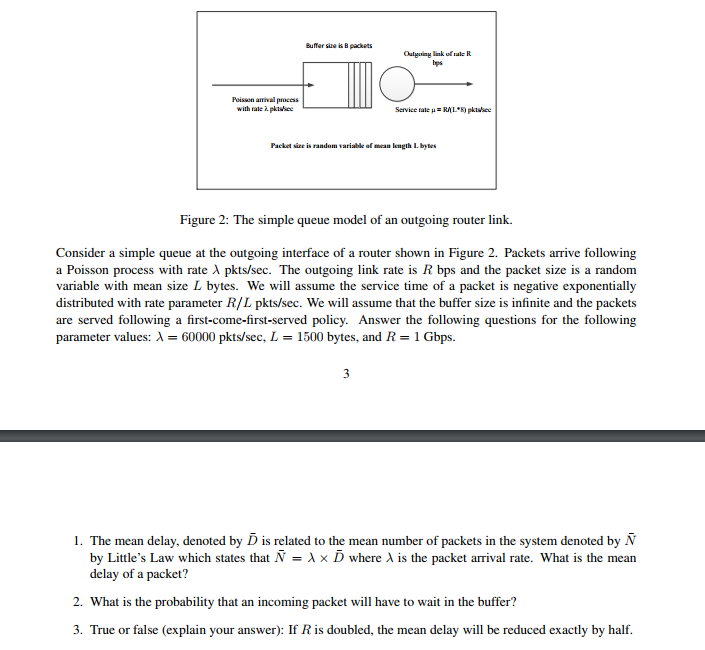Answered step by step
Verified Expert Solution
Question
1 Approved Answer
I need help with ALL parts of this question. Please explain all details. Thank you in advance! Buffer siue is Bpackets Poisson amprocess with fate

I need help with ALL parts of this question. Please explain all details. Thank you in advance!
Buffer siue is Bpackets Poisson amprocess with fate pktwec Service tale = RAL's) plaihee Packet sire is random variable of mcan length L. bytes Figure 2: The simple queue model of an outgoing router link. Consider a simple queue at the outgoing interface of a router shown in Figure 2. Packets arrive following a Poisson process with rate pkts/sec. The outgoing link rate is R bps and the packet size is a random variable with mean size L bytes. We will assume the service time of a packet is negative exponentially distributed with rate parameter R/L pkts/sec. We will assume that the buffer size is infinite and the packets are served following a first-come-first-served policy. Answer the following questions for the following parameter values: -60000 pkts/sec, L = 1500 bytes, and R-1 Gbps. by Little's Law which states that V = D where is the packet arrival rate. What is the mean delay of a packet? 2. What is the probability that an incoming packet will have to wait in the buffer? 3. True or false (explain your answer): If R is doubled, the mean delay will be reduced exactly by half. Buffer siue is Bpackets Poisson amprocess with fate pktwec Service tale = RAL's) plaihee Packet sire is random variable of mcan length L. bytes Figure 2: The simple queue model of an outgoing router link. Consider a simple queue at the outgoing interface of a router shown in Figure 2. Packets arrive following a Poisson process with rate pkts/sec. The outgoing link rate is R bps and the packet size is a random variable with mean size L bytes. We will assume the service time of a packet is negative exponentially distributed with rate parameter R/L pkts/sec. We will assume that the buffer size is infinite and the packets are served following a first-come-first-served policy. Answer the following questions for the following parameter values: -60000 pkts/sec, L = 1500 bytes, and R-1 Gbps. by Little's Law which states that V = D where is the packet arrival rate. What is the mean delay of a packet? 2. What is the probability that an incoming packet will have to wait in the buffer? 3. True or false (explain your answer): If R is doubled, the mean delay will be reduced exactly by halfStep by Step Solution
There are 3 Steps involved in it
Step: 1

Get Instant Access to Expert-Tailored Solutions
See step-by-step solutions with expert insights and AI powered tools for academic success
Step: 2

Step: 3

Ace Your Homework with AI
Get the answers you need in no time with our AI-driven, step-by-step assistance
Get Started


